Low sun on Finsthwaite Tarn.
As yet another downpour approached, the low sun picked out the tarn and the trees against a dark sky.

Finsthwaite Tarn.
Captured during a walk around Finsthwaite Tarn (High Dam), in The English Lake District, on February 1st. 2013.
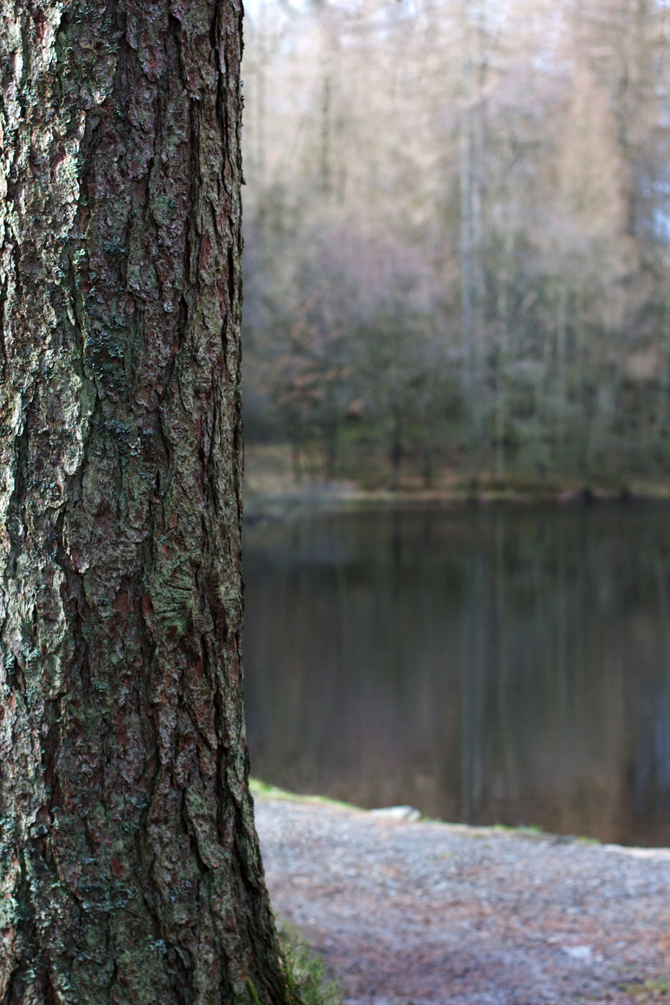
An exercise in The Rule of Thirds. (Part 2).
I recall saying in a recent post, that I dislike being bound by rules and conventions.
So, here I am... bound again.

Morning Mist.

An exercise in The Rule of Thirds.
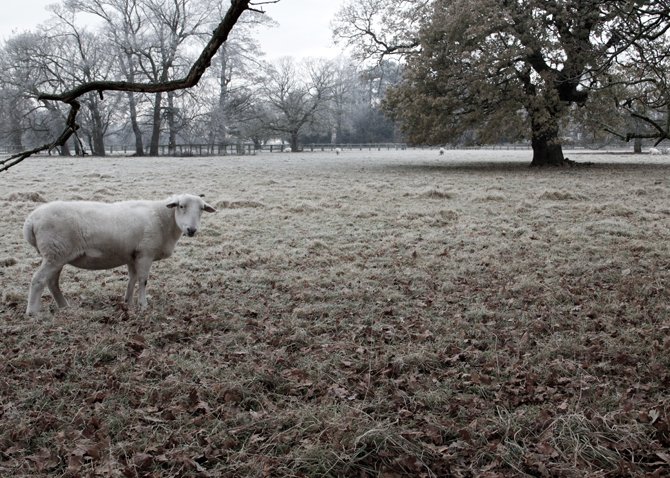
Frosted.

Wrought shadows.
I took a few photographs on my travels today. There are one or two that I feel may be worth posting.
This was taken late this afternoon. The low sun, across the River Dee estuary, picking out this ornamental wrought iron balustrade on the front of a house on Parkgate promenade.
I really like the shadow detail and the colour and quality of the light.
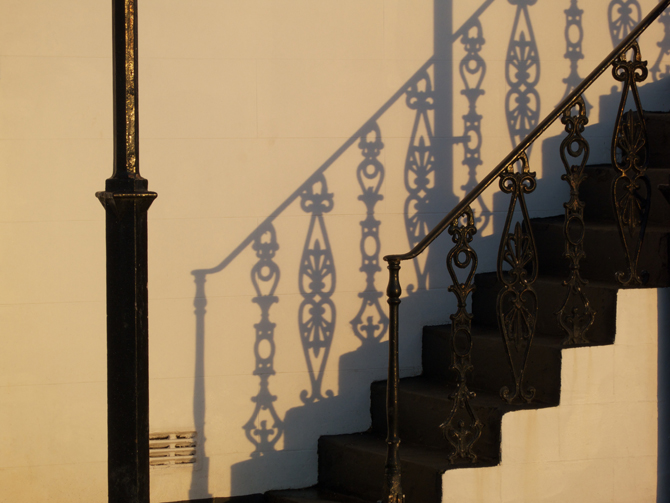
Winter horizon.
Late last week, I bought a new compact camera (a Canon PowerShot S100), specifically for moments like this. When it's just impractical to be carrying a DSLR.
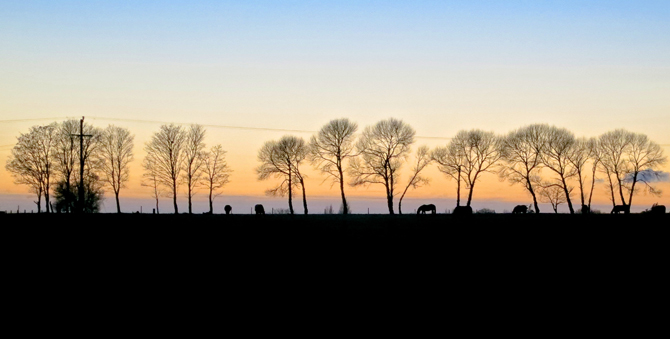
Avanti - A moment of peace, in a busy day.
Posted earlier today on Instagram. The Winter sunlight streaming into my favourite café, beautifully highlighting the steam rising from my coffee.
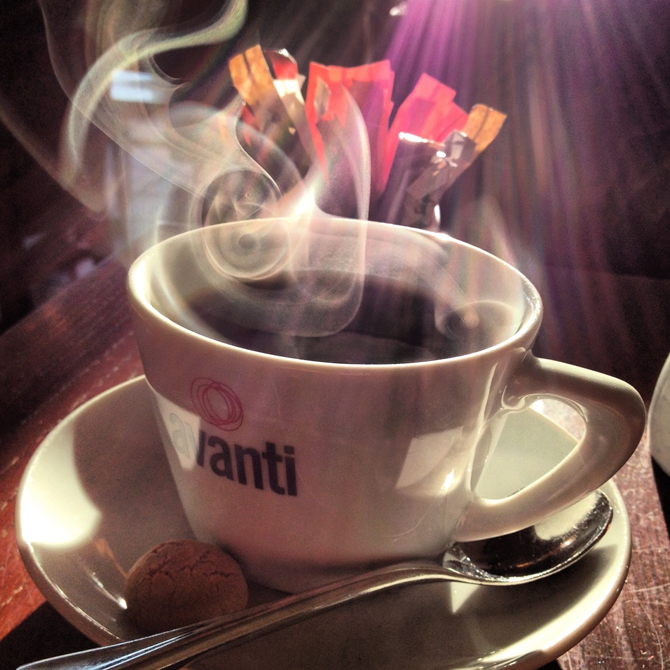
Beaumaris - Anglesey
In September, I stayed for a couple of nights in Beaumaris on Anglesey, off the North Wales mainland.
Here are two images from that stay.
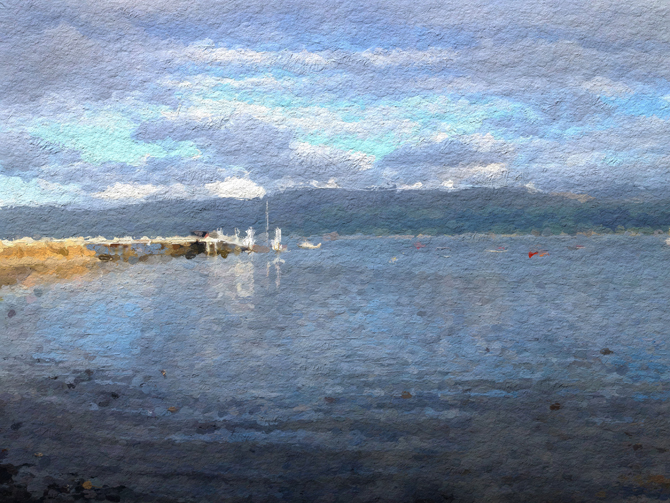
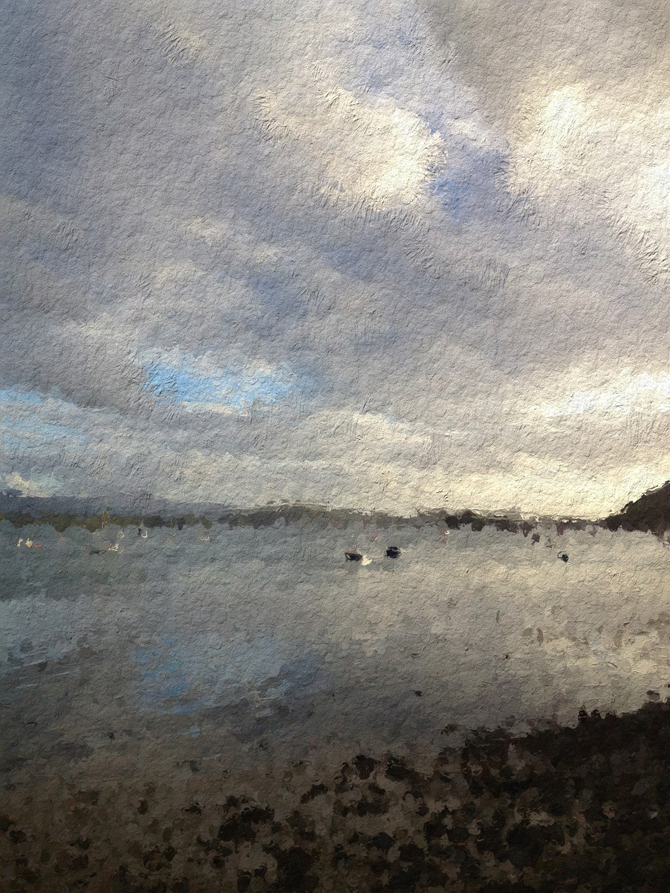
Burton Mere Wetlands.
-0.jpg)
The RSPB. Dee Estuary - Burton Mere Wetlands.
Review: K-Edge mount for Garmin Edge.
A few months ago, after a significant amount of research and justification, I bought a Garmin Edge 800 cycle computer - a decision I have not regretted for a second. It's brilliant. I intend to write a more detailed post about it in the future.
However, one down side I have encountered is to do with the mounting point on the bike.
It is supplied with a plastic mount, secured with two elastic bands. Although the mount appears to be quite flimsy, it is actually very solid and secure when attached to the bike. The issue is that it is best secured to the handlebar stem, which puts the device in an awkward position for easy visibility whilst riding; it's just too far back, out of an easy line of sight, especially when descending at speed, or climbing, out of the saddle.
It is possible to attach the mount to the handlebars, but that puts the device off centre, which doesn't look very neat, and still doesn't get it far enough forward.
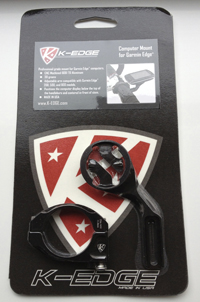 Resigned to this compromise, I was interested to see a post on Twitter, from a cycling contact, about the K-Edge mount for Garmin Edge. At that time it didn't appear to be available in the UK, and the proposed retail price was quite high. It did get very good reviews from a couple of cycle magazines and I put it on my non-urgent wish list.
Resigned to this compromise, I was interested to see a post on Twitter, from a cycling contact, about the K-Edge mount for Garmin Edge. At that time it didn't appear to be available in the UK, and the proposed retail price was quite high. It did get very good reviews from a couple of cycle magazines and I put it on my non-urgent wish list.
Since the introduction of the K-Edge mount, several other companies have launched alternatives, including Garmin themselves. Obviously the position problem is a serious enough issue for a lot of Garmin Edge users, to generate demand for a solution. My Twitter contact bought the Bar Fly and appears to be very happy with it. Both the Bar Fly and Garmin’s own Out-Front mount are made from tough plastic - the K-Edge is CNC machined 6061 T6 aluminium. The weights of all three are very similar and pretty insignificant, at under 30 grams.
About a month ago, the K-Edge mount became available in the UK through online retailers. Stock was immediately snapped up and delivery dates were extended as the mount was put on back order.
I then saw a video review on the excellent Scarletfire site, run by another Twitter contact. This re-sparked my interest in the K-Edge mount and I ordered one from Wiggle.
Three weeks later, my mount arrived, and it's all I hoped it would be. It truly is a quality piece of kit. The design, machining and finish is excellent.
It mounts easily and very firmly on standard, round profile handlebars. On smaller diameter bars some packing or modification may be required. No packing pieces are supplied, but I’m sure most keen cyclists will have a selection of different thicknesses from other bike mounts and accessories; or be able to make something from old inner tube.
I’d heard reports that the disk lock part of the K-Edge was causing some people problems, shaving plastic off the base of the Garmin. Some have even resorted to filing the aluminium to slacken the fit. I’ve had no such problems. The fit is just right, with a positive click as the unit locks into position. The mounting head, which is compatible with the Garmin Edge 200, 500 and 800 units, is on a slider, locked in place with an Allen bolt. This gives a range of forward and backward adjustment to get whichever model of Garmin you have, in the perfect position.
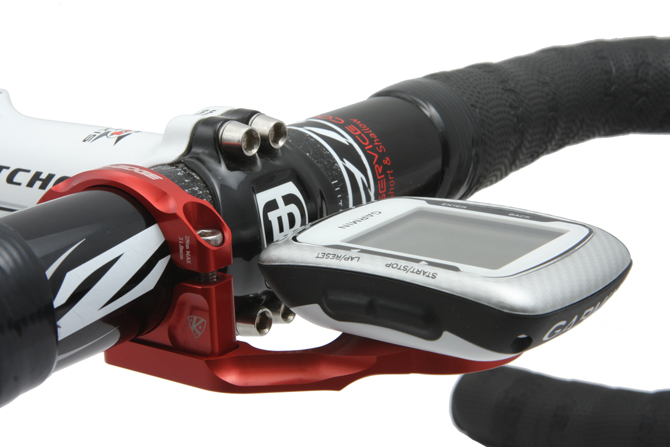 Shown with a Garmin Edge 500 attached.
Shown with a Garmin Edge 500 attached.
Since fitting the K-Edge mount, I've had only a couple of 50 mile rides, but within the first mile, the benefits were totally apparent.
My only remaining question is, can I justify a K-Edge mount for each of my bikes?
Well, with Christmas just around the corner, they're on my present list. I just hope that my close family read my blog.
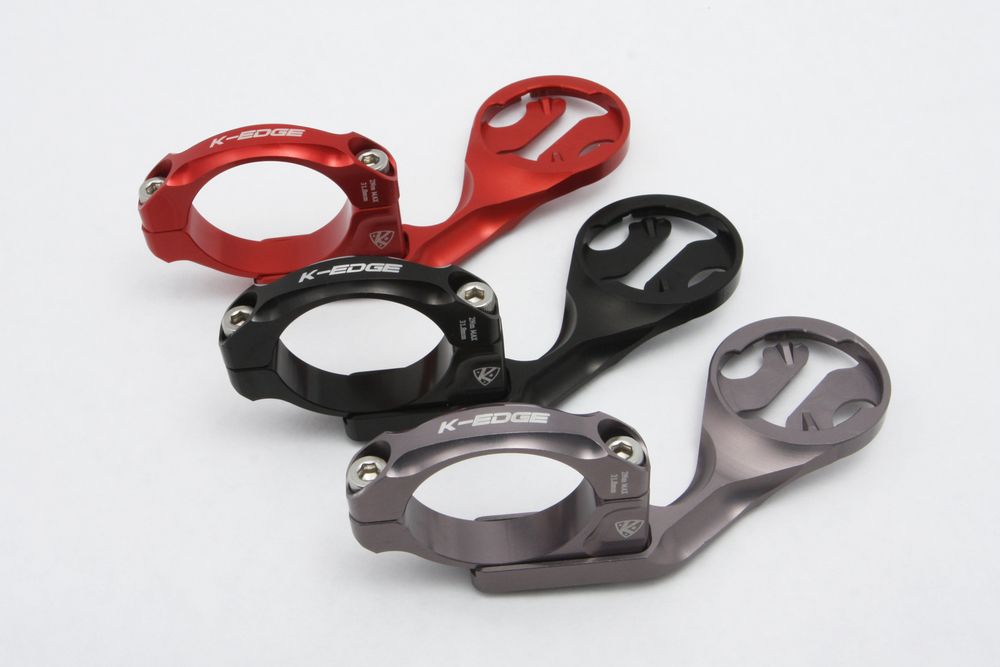 The three colour options available.
The three colour options available.
I must thank Joe Savola at AceCo Sport Group, for kindly allowing me to use the product photographs of the K-Edge Mount for Garmin Edge.
A surprising discovery.
The iPad Keyboard Dock.
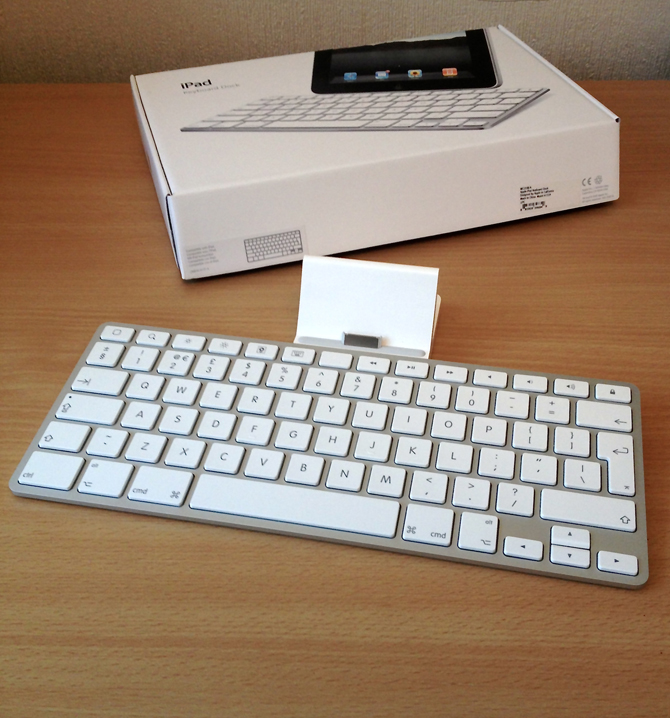
I wasn't the first member of my family to own an iPad - which is quite a surprise, because I am the most Apple-centric, amongst all of my family... by a long way.
But, it was my father who bought the first generation iPad, within days of its launch. He still has it and uses it daily, and gets immense pleasure from all he is able to do with it.
When he bought it, he had never used a touch screen device and was rather wary of being able to type using the on-screen keyboard. So, without trying it first, he bought the iPad Keyboard Dock too. Needless to say, two and a half years later, he has barely used the keyboard.
In a recent rush of blood to the head, he has embarked on a major clear out at home; working his way through cupboard after cupboard, taking lots of 'stuff' to the council tip, charity shops, and also depositing many items of indeterminate usefulness, at our house.
Actually, I shouldn't be too critical. Some of the things he has dropped off, have, and will be very useful.
Amongst everything was the iPad Keyboard Dock. He had decided that he was unlikely to ever use it, so I suggested that I tried to sell it for him on eBay.
I have an iPad 2 and just assumed that it wouldn't be totally compatible, because of the difference in thickness between the first and second generation iPads.
Today, I started to create a few eBay auctions and got the dock out to take a couple of photographs for my advert.
Just out of curiosity I tried my iPad on it. It wasn't particularly easy to locate the 30 pin dock connecter in the socket on the iPad, but, with a little careful manipulation, it went in.
The back of the dock supports the iPad reasonably well. Perhaps it is a little more wobbly than the first generation one would be, but it's okay.
Anyway, to give it a try, I sat down and started to type, and I like it. With the iPad specific function keys and Apple keyboard feel and build quality, it’s perfect for turning the iPad into a slightly more traditional computer.
An easy 400 words typed on my iPad.
Now, I just need to offer my father something for the Keyboard Dock.
I suddenly had the urge to write something.
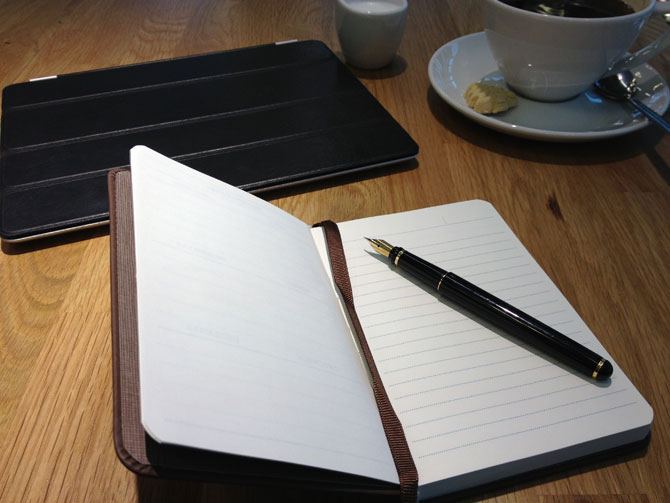
As I sit here, with my iPad, syncing documents to iCloud; adding to the same documents on my iPhone later in the day, then editing and completing them on my desktop computer in the evening, ready to post to my website, created in the UK and hosted in New York, I have the overwhelming desire to write something.
"But you are", I hear you say.
Well no, I'm not.
I mean actually write, with a pen, on paper. Not a roller ball gel pen either, but a fountain pen. One which requires filling with ink, from a bottle.
Last week, whilst buying stationery for my business, I spotted a small notebook. Bound in soft leather, containing pages of crisp, high quality paper and a cover page, printed with the words "This Journal Belongs To". I couldn't resist it.
Now, as I sit here with my journal and my fountain pen in front of me, I haven't a clue what to write.
So whilst I consider my options, I open a new document in Pages on my iPad and write this piece for my website.
Oh well...
Self Employment - Taking the plunge.
I've been self employed since March 2001 and have, no doubt like most people working for themselves, gone through a wide range of ups and downs relating to my business activities.
On the whole things have been very good. When I started, I came from a position where I was able to draw on a good selection of contacts, built up over almost twenty years in design, photography and studio management.
I was aware that providing freelance services to businesses could present some cash flow problems. Certainly a sole trader, trying to build a client list; working for businesses with a 90 day payment policy doesn't have a great deal of power when it comes to demanding 30 days maximum.
I got used to the 3 month delay and managed to find a few smaller customers who paid more quickly.
The downside to freelancing as a designer, and, I suppose in many other fields, is the lack of day to day contact with real people. There would be the occasional face to face briefing or presentation to make, but on the whole a lot of my contact with my customers was via phone or email. Many times I didn't even get to meet my customers. I did a fair amount of work with manufacturing companies in Portugal, Spain and Turkey. I never met any of my contacts from these companies. Even when I was working for businesses in the UK I often dealt with them through an agent based in the South of England, with whom I had contact in person about every six weeks.
I increasingly found myself working late at night and using the daytime to do other things. Even so, I felt a little guilty spending a couple of hours in the middle of the day, out cycling or walking or sitting in the local library reading. On a positive note, I was fitter, and the maintenance tasks on my home were gradually getting completed, something I never really had time for when working, often six or seven days a week for an employer.
A change in personal circumstances and a house move in 2004 led me to take a break from my work for several months. When I was ready to return to work, I certainly didn't relish the thought of all those lonely days in the home office, so I took a chance and set up another business, drawing on skills which I had continued to develop since my school days.
I didn't have any particularly high hopes for the business, but felt that I could always fall back on building up my design client list again, or, as an absolute last resort, apply for a job. Anyone who has been self employed with any level of success will know that this thought is one that has little or no appeal.
The new business was something quite different for me. Instead of working for corporate customers, I was going to be working for the general public, in their own homes. I designed and printed 200 flyers and spent a couple of days with my partner, (now my wife) delivering them around the local area.
Within a few days I had several enquiry calls and work started to pick up.
Now, almost eight years later, I have a client list of over a hundred, mostly individuals and families, but also some businesses. I currently have ongoing work for thirteen customers and work in the pipeline for at least the next four months. I continue to receive regular calls from potential new customers. Getting paid is far easier than it was. Most people are happy to pay on completion of the work. Since I started the business I have only had three problem payers. One actually emigrated to Australia before settling his account. In all three cases, the money owed was recovered.
I have met some wonderful people and many of my customers have become friends.
The one regret I have about self employment is that I didn’t take the plunge and do it earlier. I seriously considered it in 1997, but eventually, the (false) ‘security’ of a job in a large company won.
To anyone considering taking the huge step into the unknown that is self employment, I can only recommend it.
You certainly need saleable skills, confidence in what you do, an organised and methodical way of working, both in what you do and the associated and very much necessary office work. Finally; and this will vary depending upon your financial and family commitments, you really do need to be absolutely sure that you can afford to step away from a regular income.
I’m not saying it is easy - it isn’t... always. But the satisfaction and pride you get from working for just yourself is enormous.
Getting things done (GTD). A matter of discipline.
I wrote the bulk of this almost twelve months ago. Some of it is a little outdated, but most is still relevant and valid. I didn’t and don’t want to merely make it a list of application recommendations, although inevitably there will be some.
I'd love to be organised. Actually, I suppose I am quite good at keeping on top of most of my commitments and tasks, but inevitably, some tend to slip, or get put off, or simply forgotten.
With this in mind, and never being much of a list maker, I've been looking to technology to help me.
The trouble is, identifying exactly what I want to do and how it will fit in with my life pattern.
As far as the hardware goes I've no problem. I always have my smartphone (iPhone) with me, I have an iPad 2 which is almost always accessible and a desktop Mac at home. Whatever I use in the form of software must be able to work on all of my devices and synchronise automatically as I enter, modify or remove data.
It must be relatively simple to use, as there are many occasions where I need to quickly enter information on my iPhone whilst on the move or talking with a customer.
The last thing I want is to have to trawl through layers and layers of entry screens, only to find a simple touch in the wrong place deletes all that I have entered.
I started when I bought my first iPhone in 2007. Before that I had used traditional notebooks, calendars and diaries. For many years I had a Filofax, which, when they became popular in the mid 1980's were the height of sophistication and had huge pose factor. I remember using my Filofax in public places and getting the same admiring looks that the iPad got a couple of years ago. (Now, they are so commonplace, hardly anyone notices).
On the first generation iPhone, I used the Calendar app. Of course there were no third party applications available at that time. It worked reasonably well, but data entry was, and still is a little fiddly and slow on the small screen. I found that when I was with a customer, discussing a new project, it was far easier to take notes with a pen and paper, then transfer schedules and timings to my iPhone calendar later.
With the introduction of third party apps through the App Store a wide selection of organisational applications quickly became available. Until this time I had never considered adding photographs and sketches to notes. This was now possible, but not particularly practical, because the first generation of iPhone only had second generation GSM with rather patchy and unreliable Edge connectivity, so any file uploads were painfully slow.
The introduction of the iPhone 3G improved matters significantly, though because I was in the middle of an 18 month contract on my first generation iPhone, I didn't upgrade until the introduction of the iPhone 3GS. This was a phone capable of using the increasingly wide range of organisational apps.
Evernote stood out straight away, but it still didn't meet all of my needs. It was great for quick notes and snapping pictures to attach to the notes. The basic, free (ad supported) account was, and still is enough for me, primarily because it only forms a part of my organisational suite of applications. I've found that there's still no one perfect solution to my needs.
I'm fascinated and somewhat bewildered by people who profess to be GTD experts or gurus. Surely all they are doing is guiding people towards making better, more effective lists. It's easy to make a list, the hard part is the discipline required to work with the list; to keep up to date with entry and action. That's where I fail too often. It's deeply satisfying to create an organised, categorised list of things that need doing; to set targets and reminders. The point where I fall down, is making sure that the tasks are put into action in the order of priority set out in the list. I find myself picking out the easy ones and neglecting the ones that take time and effort. Soon, there is a mountain to be climbed, instead of a gentle uphill walk.
I find that I've still not settled on the ideal single application, but tend to use a variety of solutions to meet my varied needs. It works for me. Sort of.
I said earlier, that whatever I used had to synchronise with all of my devices, yet I find that the app I am using the most, Thinkbook, from Emiliano Molina at Bitolithic doesn't. It’s an iPad only app. It became popular when it was first launched, with its quirky interface, and I took the time to learn and appreciate it. Sadly there has been minimal development since. The most notable change being a new icon.
More recently I’ve been experimenting with Awesome Note HD, from BRID on the iPad which has plenty of useful features; there’s even an iPhone equivalent, but development seems to have slowed and syncing data is positively archaic in it’s implementation.
I am also enjoying using Clear from Realmac Software. It is an excellent note application with a lovely gesture based interface. Although there’s no real depth to it’s functionality it benefits from having both iOS and Mac desktop clients and syncing over iCloud. It is great for taking and organising short notes and priority lists.
For the future I have been looking at 2Do from Guided Ways Technologies. This has been getting some very good reviews, it is cross platform and syncs over iCloud or Dropbox. It is more expensive than many, but that may not be an issue if it does what I want it to do.
Last but not least is OmniFocus from The Omni Group. I hear nothing but good reports about OmniFocus, Admittedly some of these have been from bloggers and podcasters with perhaps, a promotional relationship with the company, but there’s no doubt that this is the high end of organisational, task management applications. I’m absolutely sure that it is worth the price Omni charge for it, but that, coupled with the fact that it is probably overkill for my fairly simple needs has meant that I have not tried it, and probably won’t.
My organisational needs are currently fulfilled by a combination of the following applications.
Calendar
Evernote
Clear
Reminders
Notes
ThinkBook
Awesome Note HD
On the Mac, I use BusyCal and Fantastical instead of the Apple Calendar.
I also use Siri to create notes and reminders on my iPhone.
As I’ve repeated throughout this article, you will find the tools to do what you want to do, even if they are a selection of apps that don’t all work in perfect harmony with each other and on different platforms. The hardest part is developing and maintaining the personal discipline required to run an efficient and functional GTD system.
I'm just lazy.
The site/blog remains pretty slow in terms of updates and new content. As I've mentioned on several occasions; when I actually do post something, I thoroughly enjoy the process and love to see the hit count rise as people find what I have posted. Then the chart subsides and returns to the usual levels of activity.
Maybe, as a new year resolution, I should set myself a target of a post a day, (possibly a little too adventurous) or two or three posts a week.
Would anyone really care? Probably not. But, that's not the point. I still enjoy the process, regardless.
I'm just lazy.
That's two posts this week, by the way. :-)
Caught off court.
I saw this, close to where I was working today, and captured it on my iPhone. Not totally happy with the exposure and high contrast, it will probably need a little further editing. But, I still feel it's worth posting.
Hope you like it.

Beans and a Spare... By Jon Derricott
A short film about an English cycling institution!
The famous Eureka Cafe at Two Mills in Cheshire UK (known locally as 'The Mills') is a rare survivor of the tearooms and cafes that came into being in the late 19th and early 20th centuries to cater for cyclists. It's position at a crossroads in the South East corner of the Wirral peninsula, made it ideally placed for Merseyside cyclists wanting to explore Cheshire, North Wales and beyond.
The Eureka first opened it's doors in 1929, it has been an important place to local cyclists ever since and continues to play a vital role today.
Beans and a Spare... from Jon Derricott on Vimeo.
